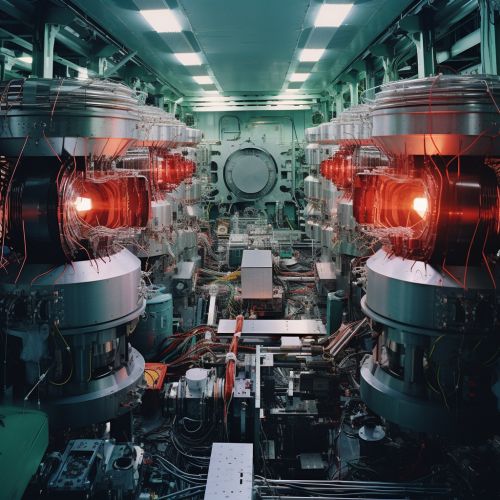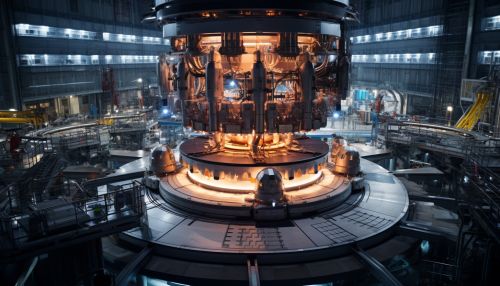Neutron Diffraction
Introduction
Neutron diffraction or elastic neutron scattering is a powerful and versatile technique used in the study of materials in various fields of science, including physics, chemistry, materials science, and biology. It is a technique that utilizes the wave-like properties of neutrons to obtain information about the structure and dynamics of materials.
Principle
Neutron diffraction is based on the principle of wave-particle duality. Neutrons, like all particles, exhibit both particle and wave characteristics. When a beam of neutrons is directed at a material, the neutrons can be diffracted, or scattered, by the atomic nuclei or by the magnetic fields from unpaired electrons. The pattern of scattered neutrons can then be used to determine the arrangement of atoms within the material, and the magnetic ordering of the material.
Neutron Sources
Neutrons used for diffraction experiments are typically produced in nuclear reactors or by spallation sources. In a nuclear reactor, neutrons are produced by nuclear fission, while in a spallation source, high-energy protons are used to knock neutrons out of a heavy metal target. The neutrons are then slowed down to useful energies by a process called moderation.


Neutron Diffraction Instruments
Neutron diffraction experiments are carried out using specialized instruments, which typically consist of a neutron source, a sample holder, a detector, and a data acquisition system. The neutron source produces a beam of neutrons, which is directed at the sample. The detector measures the intensity of the neutrons scattered by the sample, and the data acquisition system records the data for further analysis.
Applications
Neutron diffraction has a wide range of applications in various fields of science. In physics, it is used to study the structure and properties of materials, including metals, ceramics, and polymers. In chemistry, it is used to determine the structures of molecules and crystals. In materials science, it is used to investigate the properties of advanced materials, such as superconductors and magnetic materials. In biology, it is used to study the structures of biological macromolecules, such as proteins and nucleic acids.
Advantages and Limitations
Neutron diffraction has several advantages over other diffraction techniques, such as X-ray and electron diffraction. Neutrons have no charge, so they can penetrate deep into materials without being absorbed or deflected. They are also sensitive to light elements, such as hydrogen, which are difficult to detect with X-rays. Moreover, neutrons can distinguish between isotopes of the same element, which is not possible with X-rays.
However, neutron diffraction also has some limitations. The main limitation is the availability of neutron sources, which are expensive to build and operate. Another limitation is the relatively low intensity of neutron beams, which can make experiments time-consuming. Finally, because neutrons are highly penetrating, they can cause radiation damage to some samples.
Conclusion
Neutron diffraction is a powerful technique for studying the structure and properties of materials. Despite its limitations, it has made significant contributions to our understanding of the physical world, and continues to be an important tool in scientific research.
